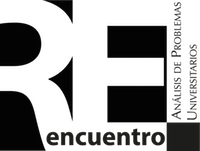Repercusiones de los sistemas de pago en la profesión y la formación médica
Keywords:
Profesión médica, Autonomía profesional, Medical profession, Professional autonomyAbstract
In medical curriculum design, it is important that the multiple tensions produced by changes and adjustments within the medical profession and its relationships with society be acknowledged. Forms of payment and financing for doctors are currently one of the governing aspects of these changes. The traditional model of a doctor (supplier) being paid for a service received by a consumer of the service (patient) is being modified both by the costs of providing the service and by modes of health care delivery. In response to these changes, public and private health care organizations have been developing payment models that break with the traditional structure. Four of these new models are particularly notable for the impact they may have on medical professional autonomy. This article analyzes them and indicates some of the implications they have for training doctors and for the profession, management involvement, organizational changes, enrollment and monetary compensation and incentives. Diagnostic Related Groups (DRGs) are analyzed as a system that may affect the core of the profession.






